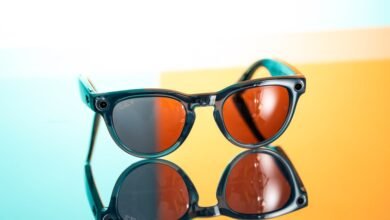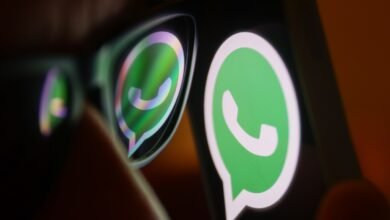Meta Ray-Ban Smart Glasses Sell Out Amid High Demand

▼ Summary
– Meta Ray-Ban Display sold out almost immediately across US stores, with restocks planned and store availability set to double this month.
– The glasses feature a monocular HUD with 20-degree field of view, 5000 nits brightness, and 600×600 resolution that’s barely visible to others.
– Users interact through the Meta Neural Band wristband, which detects finger gestures via muscle activation and offers 18-hour battery life.
– Key functions include Meta AI with visuals, messaging apps, navigation, live captions, music control, and camera preview with a December update adding text input.
– High demand created challenges with fully booked demos through December, limited retail stock, and availability restricted to select US stores requiring appointments.
The new Meta Ray-Ban Display smart glasses have completely sold out across nearly all retail locations within just two days of their launch, signaling exceptionally strong consumer interest. Meta’s Chief Technology Officer, Andrew Bosworth, confirmed that restocking efforts are actively underway. The company also intends to significantly expand retail availability by doubling the number of stores carrying the product in the coming month.
These innovative glasses build upon the capabilities of the standard Ray-Ban Meta model by integrating a small, fixed heads-up display into the right lens. Users interact with the interface through finger gestures, which are detected by the accompanying Meta Neural Band. This wristband employs surface electromyography (sEMG) technology, sensing muscle activations in the wrist to interpret finger movements. It provides haptic feedback, carries an IPX7 water resistance rating, and is advertised to deliver approximately 18 hours of battery life.
The monocular display offers a 20-degree diagonal field of view and reaches a peak brightness of 5000 nits. With a resolution of 600×600, it achieves 42 pixels per degree, a specification that surpasses the Apple Vision Pro. Crucially, the display features minimal light leakage at just 2%, ensuring that the content remains private and invisible to people nearby.
Functionality is extensive. Users can access Meta AI with Visuals for receiving step-by-step instructions directly in their line of sight. The glasses support messaging and video calls through popular platforms like WhatsApp, Messenger, and Instagram, and they display notifications for incoming phone messages. A preview and zoom feature assists with photo and video capture using the integrated camera. Pedestrian navigation is available via an in-display minimap across 28 cities. Additional features include live captions and real-time translation for conversations, plus full music playback controls for skipping and seeking tracks.
To accommodate the display technology, the glasses weigh 69 grams, which is heavier than the 50-gram standard smart model and significantly more than the 45-gram traditional Ray-Bans. The frames and temples are also noticeably thicker, representing the necessary trade-off for incorporating advanced display hardware. Meta states the glasses should provide around six hours of battery during typical use, though real-world performance remains to be independently verified.
In a statement on Threads, Bosworth expressed his enthusiasm, noting the product is “off to a flying start.” He acknowledged that demos are fully booked through November in many areas and reassured customers that the company is working diligently to increase supply. He explained that the mandatory demo policy is in place because the combination of display glasses and the neural band represents a completely new technological experience for most people, and Meta wants to ensure proper fit and a positive first impression.
The high demand has created significant challenges for early adopters. The $800 smart glasses and their sEMG wristband are currently exclusive to the U.S. market, available only at select Best Buy, LensCrafters, Sunglass Hut, and Ray-Ban stores, in addition to the Meta Lab. While some locations permitted walk-in purchases, many required advance appointments. By launch day, appointment slots at most stores were filled through mid-October, with some locations booking into November or even December.
The situation on the ground has been chaotic. Some customers with confirmed appointments arrived to find they could try the demo unit but were unable to purchase because retail stock was unavailable. Others hoping to buy without an appointment encountered empty shelves and store managers who were uncertain about when initial shipments would arrive.
One journalist managed to purchase one of the last available units in New York City on launch day, but only after an extensive search across multiple stores. He also discovered that only two of the three available band sizes were in stock. It remains unclear whether these supply issues stem from production constraints, a shortage of trained staff, or simply demand far exceeding projections. For many eager customers, the launch has felt more like a limited “paper launch” than a broad consumer release, highlighting that this is not yet a widely accessible product.
(Source: Upload VR)





